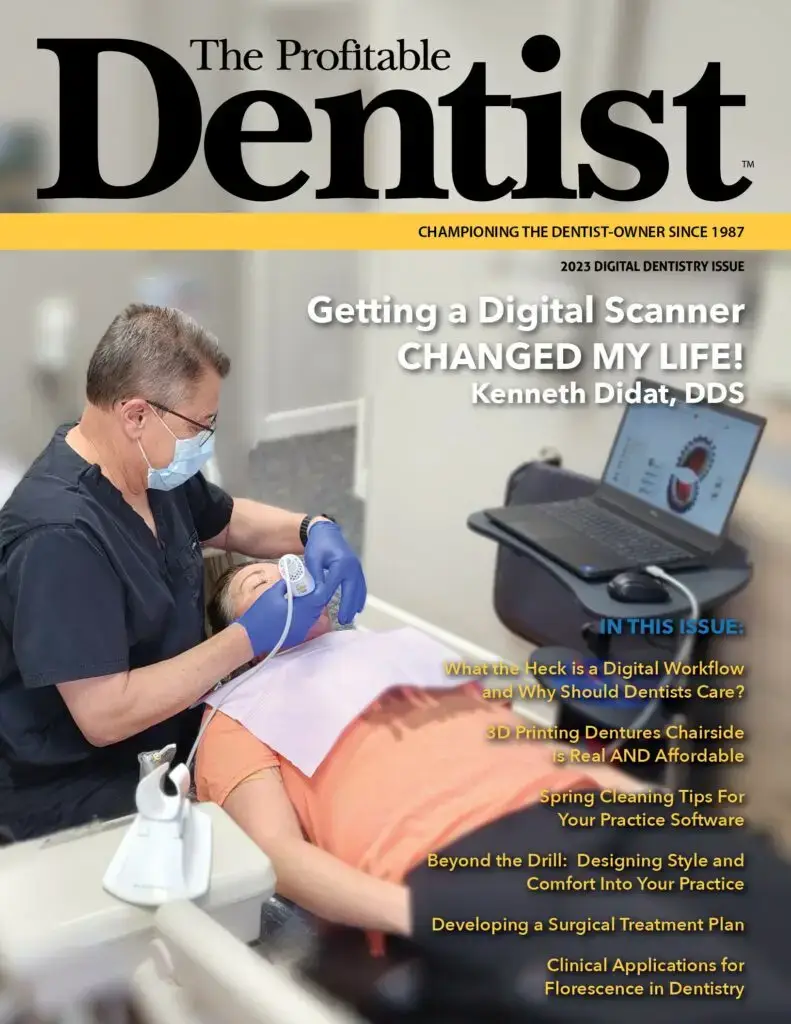Periodontal disease is unique and bizarre in how it operates, as it appears to jump around the oral cavity for no apparent reason, but there are reasons. Systemic contributions, lack of oral hygiene, stress and the inability to maintain proper maintenance schedules all are the reasons for this malady. This explains why, from one visit to the next, the mouth can exhibit apparently healthier tissue or can show flare-ups of bleeding and pocketing.
Dr. Jefferson Hardin (periodontist) wrote in the Journal of Public Health Dentistry in 1981 that the general dentist’s involvement in the control of periodontal disease was not only necessary but imperative if there were any chance to control it. The link between periodontal disease and the patient’s overall systemic health has been established and re-established over time.
The link is established by way of inflammation, as gum disease is the body’s most abundant source of low-grade inflammation. This reduces the body’s immune response and results in irreversible damage to the immune system. The bacteria involved in periodontal disease is the same bacteria associated with heart disease, stroke and other systemic disorders. When periodontal disease is left untreated, these bacteria will enter the bloodstream, attract platelets and put the patient at greater risk for cardiovascular disease, stroke, diabetes, and multiple other systemic disorders.
The bacteria involved in periodontal disease is the same bacteria associated with heart disease, stroke and other systemic disorders.
Eighty-five million Americans have some form of CVD while more than 200 million Americans have some form of periodontal disease. Patients with periodontal disease are twice as likely to have heart disease, as inflammation leads to harden arteries, reduced blood flow, and both heart attacks and strokes. Oral bacteria have been found in the deposits of narrowed arteries and can clog them entirely or break loose and lead to heart attacks or strokes.
Streptococcus Sanguis (a periodontal bacteria), found in stroke victims, causes thickening of the carotid arteries, obstructed blood flow to the brain and hence strokes. The fact that every 40 seconds an American has a stroke, and every 4 minutes one American dies of a stroke (all of which is caused by vascular inflammation) means we certainly can help prevent the incidence of CVD and strokes in the approximately 1.6 million Americans inflicted each year.
The relationship between diabetes and periodontal disease goes both ways. Patients who are diabetic tend to develop periodontal disease, and patients with periodontal disease tend to develop diabetes. Patients with diabetes have high glucose levels which make it more difficult to defend the body against infection and easier for the bacteria to flourish in the mouth. Diabetic patients thus have a constant systemic inflammatory state caused by periodontal disease.
Reduced preterm birth is found in women treated for periodontal disease during pregnancy versus those who delayed therapy until postpartum, (see 2004 AAP position statement).
Six specific periodontal spirochetes have been found in the brains of Alzheimer’s patients. These find their way into the bloodstream by simply chewing, eating, or brushing one’s teeth in the presence of periodontal disease.
Arthritis and periodontal disease are both characterized by: chronic inflammation located in a soft tissue site, and adjacent to bone. Both diseases (arthritis and periodontal disease) have the same released inflammatory mediators.
The challenge in our profession is positioning the dentist and the hygiene department in the proper comfort zone to reiterate this knowledge
Cancer risks increase in the presence of periodontal disease. Here the bacteria and their toxins place the immune system on alert and cause the liver to produce c-reactive proteins, which again have inflammatory effects on the arterial system.
The challenge in our profession is positioning the dentist and the hygiene department in the proper comfort zone to reiterate this knowledge and information to the patient:
“Mrs. Smith, for years we have been observing and treating your periodontal condition, but we have seen over time that we are taking two steps forward and three steps back. As we have been slowly and progressively losing ground to this disease, we have taken it upon ourselves to become as educated as we can about the process. We, as an office, have spent a significant amount of time learning more about this disease and how to combat it. We have developed and implemented a structured system that gives all our patients the opportunity to arrest this disease process. The periodontal exam is the first step in identifying the disease. Here, we take a small ruler, called a periodontal probe, and record numbers that tell us the level of bone loss around your teeth and the significance of any bleeding we might find. Both are indicators of active infection. As periodontal disease is one which destroys healthy gums and bone, it is something we want to control. This disease has also been linked to heart disease, stroke, diabetes, premature births, arthritis, Alzheimer’s disease and even cancer. This disease tends to reduce your body’s immunity and thus makes the body more susceptible to contracting any disease. We will begin by taking a full mouth set of films that allow us to see the entire root and bone support of your teeth.”
It is now time to explain the meaning of your collected information and its relationship to any existing systemic disorders owned by that patient, and the resulting consequences of not treating this disease. The patient is now asked: “How soon can we get you scheduled to begin the process of controlling this disease?”
Upon completion of this exercise this patient is now positioned to understand the significance of EVERY hygiene visit. We as a profession, must begin to recognize that we are no longer treating just the oral cavity, but rather the entire body!




